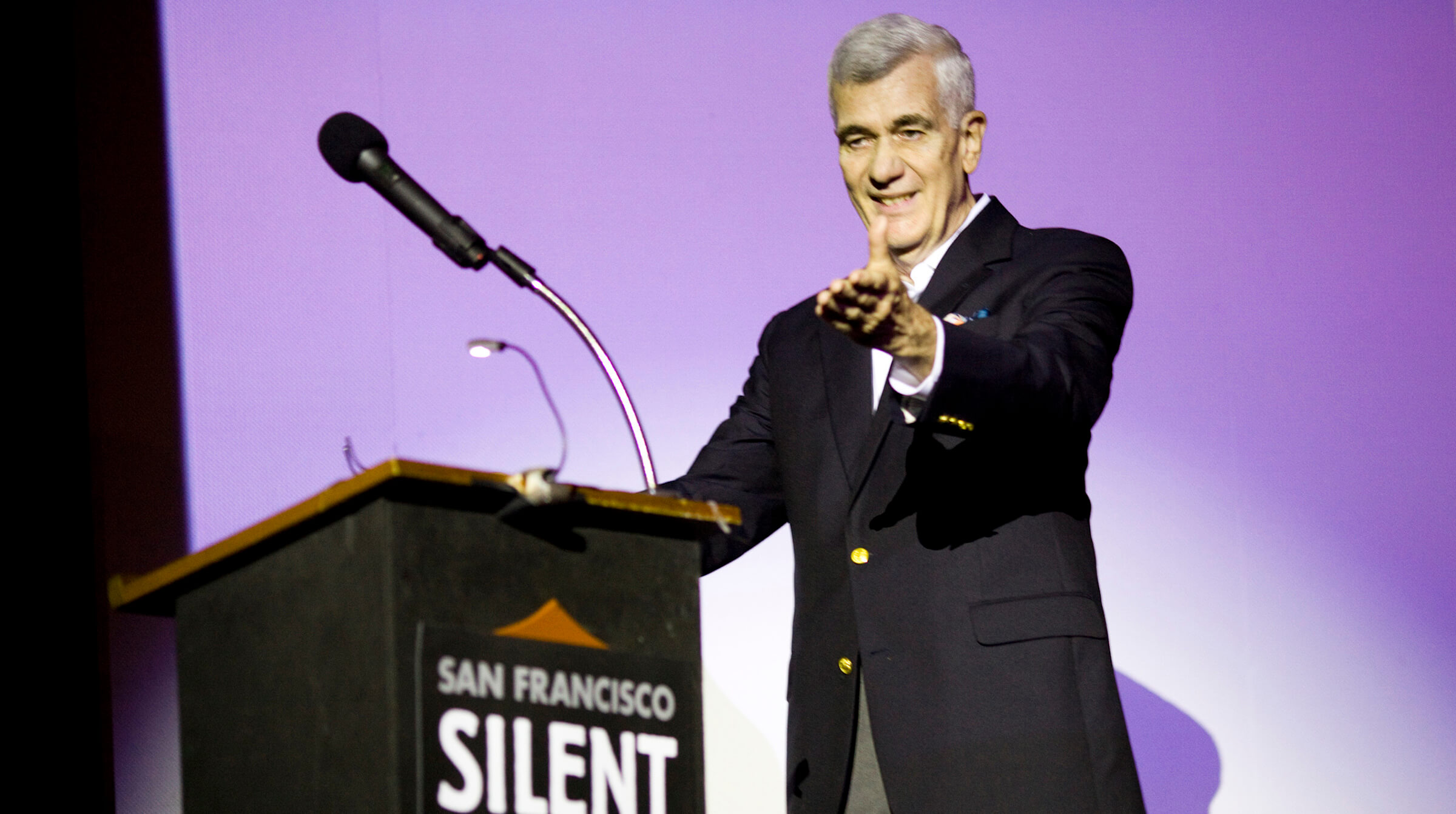This feature was published in conjunction with a special presentation—Winsor McCay: His Life and Art—by John Canemaker at SFSFF 2013
Award-winning animator, historian, and educator John Canemaker was 12 years old when he first heard about Winsor McCay. Watching the Disneyland television program in 1955, he was fascinated by a re-creation of McCay’s live shows, featuring an actor playing McCay interacting with the animated Gertie the Dinosaur. Even then, Canemaker was a budding artist who had been drawing all his life. His interest aroused, he began experimenting with animation, using as cels old X-rays that his parents—who both worked in a hospital—brought home for him. He even filmed a short about the history of animation, even though he knew little about it.
The way Canemaker tells it, he stumbled into his career. Born John Cannizzaro to a working-class family in upstate New York, he moved to New York City after high school and embarked on an acting career, changing his name professionally to John Canemaker. He worked in off-Broadway theater and achieved success in television commercials, eventually saving enough money to go to college in the early 1970s. A teacher who knew about his interest in animation offered him college credits if he would go to California and interview the original Disney animators, the so-called “Nine Old Men.” He did and was so intrigued that he delved more deeply into the history of animation, writing dozens of articles and making two films, Remembering Winsor McCay (1976) and Otto Messmer and Felix the Cat (1977). His book Winsor McCay: His Life and Art was first published in 1987, and he’s since written critically acclaimed books on other idols such as Tex Avery as well as six richly illustrated books on Disney animation.
After getting his master’s degree in film at New York University, Canemaker began teaching there and was one of the founders of the animation department. At the same time, he was making his own animated films. Several of his personal projects are in the permanent collection of New York’s Museum of Modern Art, and his autobiographical film, The Moon and the Son: An Imagined Conversation (2005), won an Oscar for best animated short. He has created animated segments for Sesame Street, the feature The World According to Garp (1981), and several social-issue documentaries. When the Giornate del Cinema Muto awarded him its prestigious Jean Mitry Award in 2007, the catalog said of Canemaker’s work: “Whether writing, teaching, or making film, Canemaker’s work is saturated in loving homage to the great masters of silent and classic animation.”
Canemaker closes Winsor McCay: His Life and Art with tributes to the pioneering artist from generations of animators that McCay influenced, from Chuck Jones, who stated flatly that “The two most important people in animation are Winsor McCay and Walt Disney, and I’m not sure who should go first,” to Garry Trudeau, who praised “the validity of ordinary reality” in McCay’s work. Canemaker’s own accolade speaks for himself, and for all of them: “The physical act of putting pencil or pen to paper—to use lines to separate the dark from the light, in order to make the invisible visible and reveal a private vision—filled McCay with a joy experienced only by other graphic artists.”
Image credit: Pamela Gentile

